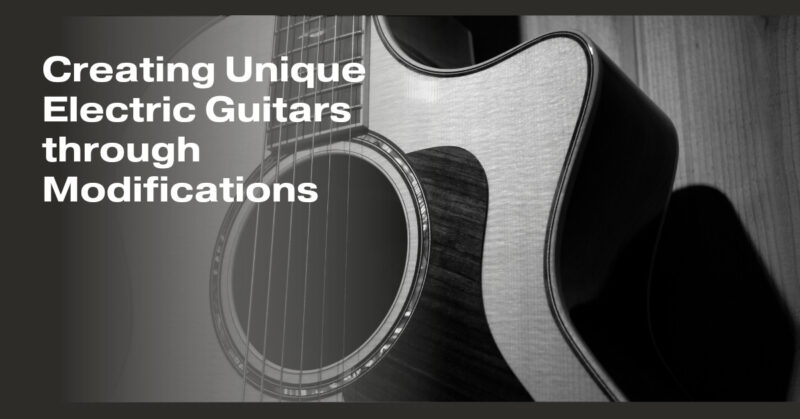Modifying an electric guitar can be a creative and rewarding endeavor, allowing you to personalize your instrument to suit your unique style and preferences. Whether you want to improve playability, enhance tone, or make aesthetic changes, here are some popular guitar modifications and customization options to consider:
1. Pickup Upgrades:
- Swapping out pickups is one of the most common modifications. Different pickups can drastically alter your guitar’s tone. Options include single-coil, humbucker, P90, and active pickups. Experiment to find the right fit for your musical style.
2. Wiring and Electronics:
- Modifying the guitar’s wiring and electronics can enhance its versatility. You can install coil-split switches, phase switches, or push-pull pots to achieve different pickup configurations and tones.
3. Hardware Replacement:
- Upgrading hardware components like tuning machines, bridges, and tailpieces can improve tuning stability and sustain. Consider locking tuners, a high-quality bridge, or a Bigsby-style vibrato system.
4. Nut and Fretwork:
- Replacing the nut and improving fretwork can enhance playability and intonation. Opt for a well-cut bone or graphite nut and ensure frets are level and well-dressed.
5. Custom Pickguards and Covers:
- Adding a custom pickguard or pickup covers can change the guitar’s appearance. Many materials and designs are available to match your style.
6. Paint and Finish:
- Custom paint jobs and finishes can transform your guitar’s look. From solid colors to intricate designs, you can work with a professional luthier or do it yourself if you have experience.
7. Neck Profile and Fingerboard:
- Changing the neck profile or fingerboard material can alter the feel of the guitar. Consider a different neck shape or switching from rosewood to maple or vice versa.
8. String Gauges and Setup:
- Experiment with different string gauges to find the balance between playability and tone. Adjusting the guitar’s setup, including action, intonation, and neck relief, can make a significant difference in how it plays.
9. Strap Buttons and Locks:
- Installing strap locks can prevent accidental drops during performances. These are simple but effective modifications for gigging musicians.
10. Custom Inlays and Fret Markers: – Personalize the fretboard with custom inlays or markers. This is a unique way to make your guitar stand out.
11. Weight Reduction: – Some players opt to chamber or lighten the body of the guitar to reduce weight and potentially alter the tonal characteristics.
12. Shielding and Grounding: – Reducing electrical interference by shielding the guitar’s electronics cavity and ensuring proper grounding can improve the overall noise and signal quality.
13. Additional Features: – Add unique features like a kill switch, built-in effects, or an onboard preamp to expand your sonic possibilities.
14. Signature Modifications: – Emulate the modifications of your favorite guitarists. Many iconic players have unique setups that can inspire your own customizations.
When undertaking guitar modifications, it’s important to have the necessary skills or seek the assistance of a professional luthier or guitar technician, especially for complex modifications like routing for new pickups or major structural changes. Additionally, keep in mind that significant modifications may affect the resale value of your guitar, so consider the long-term implications of your customizations. Ultimately, customizing your electric guitar can be a fun and creative way to make it uniquely yours and enhance your playing experience.

